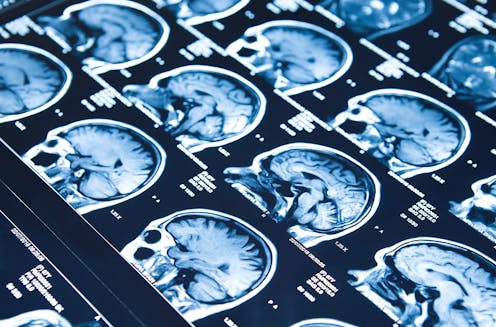
Epilepsy is one of the most common neurological disorders, affecting roughly 50 million people around the world. It’s a condition characterised by seizures which involve episodic, abnormal activity in nerve cells in the brain.
People can have convulsive seizures, where the body stiffens and shakes. There are also more subtle seizures during which people may, for example, lose awareness for short periods of time. While epilepsy always involves seizures, some people can have seizures without being diagnosed with epilepsy.
Epilepsy is more common as we get older, and the main risk factor for the condition in later life is stroke. Given that COVID affects older adults most severely and can result in stroke, some might speculate that COVID could see more people develop epilepsy. Whether this is actually the case, though, has been difficult to prove.
In a new study, we’ve found that the risk of seizures or epilepsy following a COVID infection is significantly higher than after an influenza infection.
We know that COVID is associated with psychiatric and neurological symptoms such as anxiety and difficulty with memory. Many early studies exploring the impact of COVID on the brain, however, focused on the immediate period after infection or had low patient numbers.
To try to more definitively answer whether COVID is associated with epilepsy or seizures, we looked at the health records of people who had been infected with COVID. We then carefully matched them (so that they were similar in characteristics like age, sex and medical conditions) with a group of people who had been infected with influenza.
Each group consisted of 152,754 people, none of whom had previously been diagnosed with epilepsy or recurrent seizures. We compared the incidence of epilepsy and seizures between the two groups over a six month period following the initial infection.
Read more: COVID-19's impacts on the brain and mind are varied and common – new research
What we found
The rate of new cases of epilepsy or seizures was 0.94% in the people who had COVID, compared with 0.6% in those who had influenza. While the overall risk of seizures is therefore small, these cases show that people who had COVID were 55% more likely to develop epilepsy or seizures over the next six months than people who had influenza.
We then looked to see if certain groups were particularly susceptible to seizures or epilepsy after COVID. We found that, compared to influenza, children aged under 16 and people who were not hospitalised were more likely to develop epilepsy or seizures.
There was also a delay to when children and non-hospitalised patients experienced seizures or epilepsy, perhaps explaining why this phenomenon has not been detected in studies of shorter duration.
Severe infections can make people more susceptible to seizures, so it’s possible that if someone is hospitalised for either COVID or the flu that seizures will manifest as part of the acute illness.

We see this in our data. For people with COVID who were hospitalised, the point at which a diagnosis of seizures or epilepsy was most common was at nine days after infection. For those who were not hospitalised, the peak was at 41 days.
In children with COVID, the peak point for seizures or epilepsy was at 50 days after infection and at that time children who had COVID were three times more likely to have epilepsy or seizures than children who had flu.
It’s possible that seizures occur due to changes in the immune system which may take some weeks to manifest, thereby contributing to this delay. But we don’t know why seizures might happen after COVID, nor why their onset appears to be delayed after an infection in children and patients with less severe disease.
Most people who have a stroke while infected with COVID will be hospitalised. So it doesn’t seem that stroke is the explanation for the relative increase in post-COVID seizures seen in adults, given we saw an increase among non-hospitalised patients too.
What now?
Although the overall rate of seizures and epilepsy after COVID is small, given the large number of people who have been infected with COVID, this could result in increases in the number of people with seizures and epilepsy.
Our study also demonstrates that even relatively milder COVID infections can be associated with neurological conditions, and shows the need for vaccination programmes that try to prevent COVID infection, perhaps especially in children.
There are some limitations to this study. For example, we didn’t know which variant of COVID people were infected with or whether they had been vaccinated.
We now need to do more research to try and understand why people may be developing epilepsy and having seizures following COVID. It will also be vital to continue to pool data on the neurological consequences of COVID and track longer-term trajectories of people who do develop seizures following a COVID infection.
This study was supported by the National Institute for Health and Care Research (NIHR) Oxford Health Biomedical Research Centre (BRC), grant BRC-1215-20005
This article was originally published on The Conversation. Read the original article.







